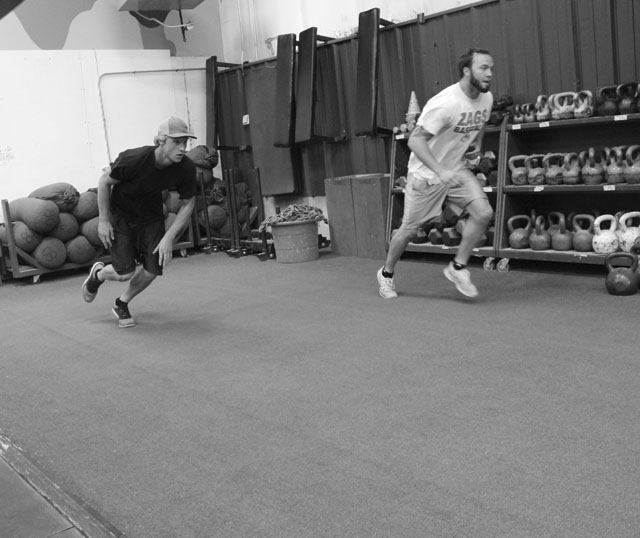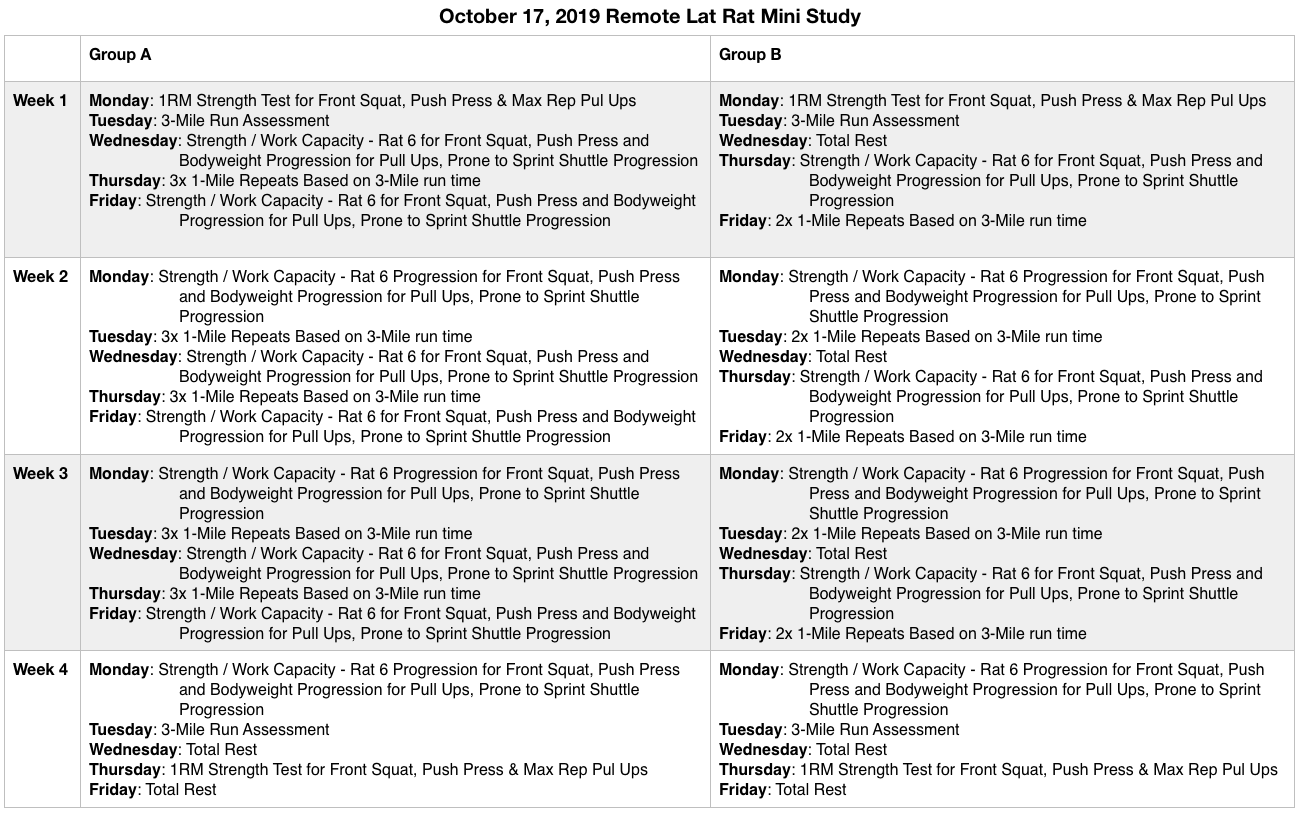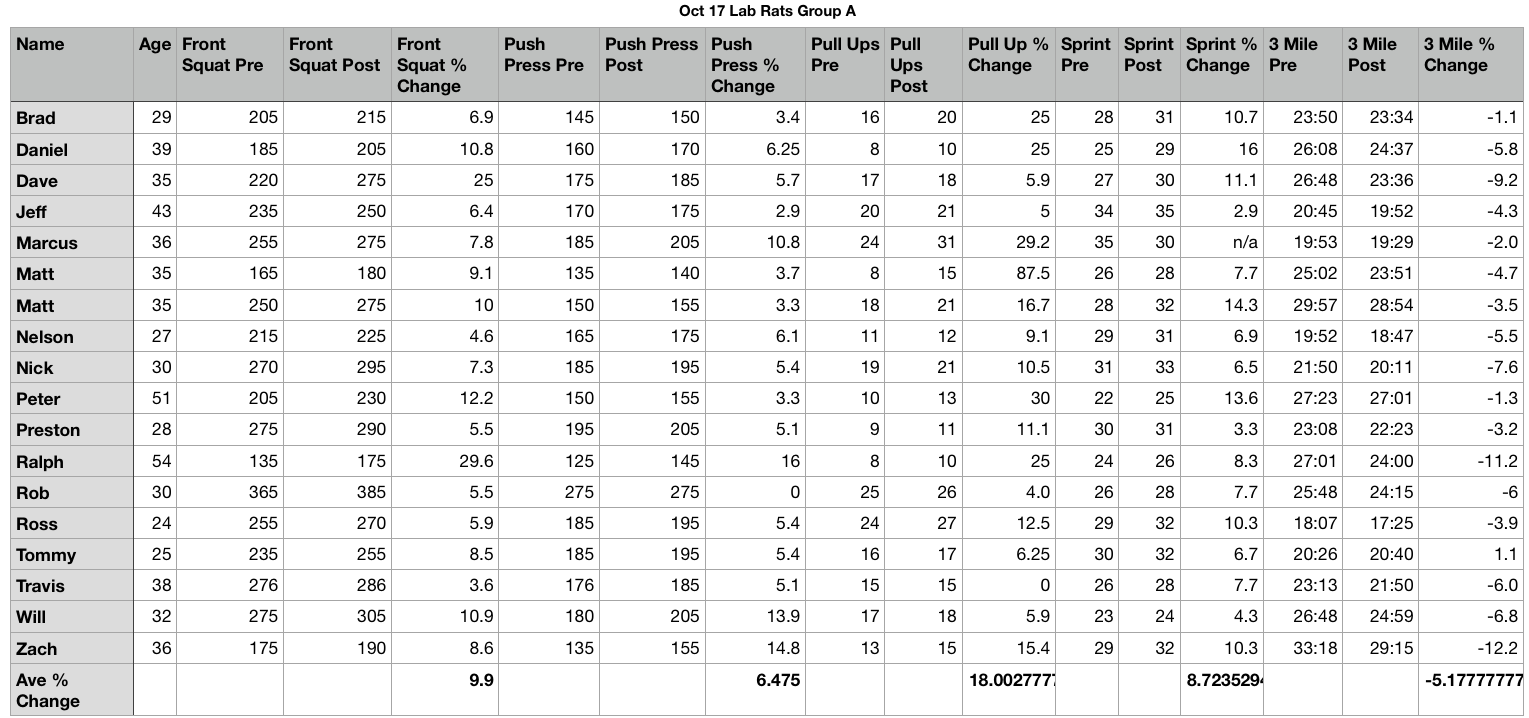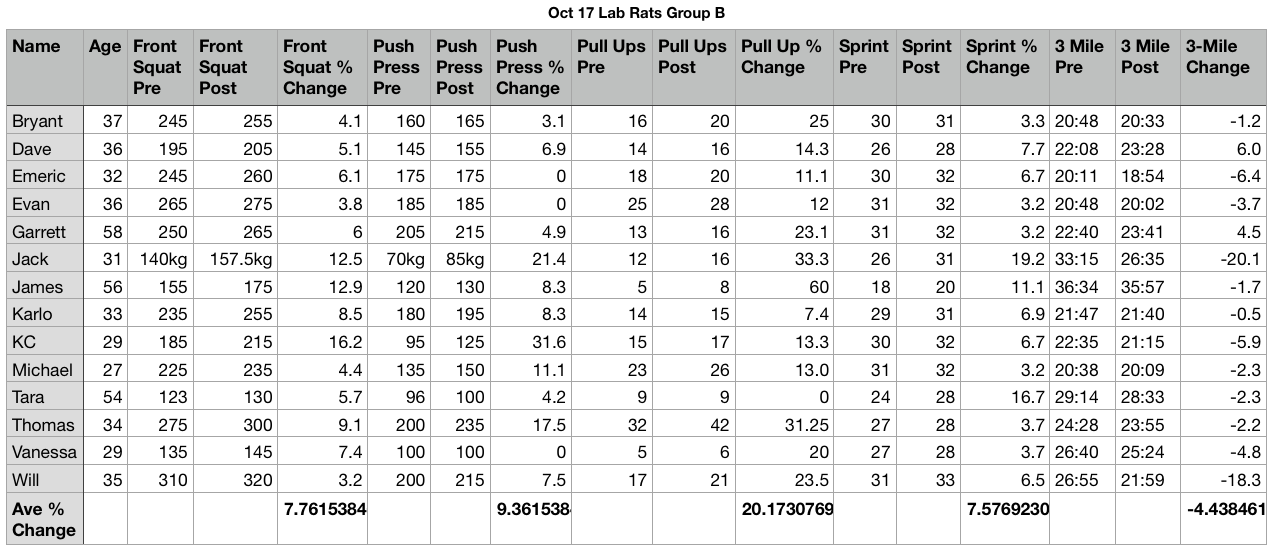
By Rob Shaul, Founder
BLUF
We conducted a 4-week Mini-Study using remote lab rats to test the effect of training volume across three training measurables: Strength (barbell and bodyweight), Sprint-Based Work Capacity, and Endurance (3-Mile run Performance).
Specifically, we were interested to see if we could reach the same strength and conditioning results by training 2/3 of the total volume for Strength, Work Capacity and Endurance.
Results
Both groups saw similar improvement over all the measured variables, indicating that the lower volume training protocol was as effective at improving fitness in a multi-modal training program as a higher volume program.
The higher volume group A saw slightly better improvement on the Front Squat, Prone to Sprints and 3-Mile Run. The lower volume group B saw slightly better improvement on the Push Press and Pull Ups. But, the differences were so small they could be negligible.
See the chart below:

Background
MTI’s strength and conditioning research is focused on delivering actionable results to improve mission-direct program design.
The aim of this study was to test if a multi-modal training protocol with 1/3 less overall training volume was as effective at increasing fitness across multiple variables as a higher-volume training program.
From a programming perspective, reducing training volume without negatively affecting fitness improvement is a win/win. The athlete can achieve the same fitness with less time spent training, and less impact from training to the body.
Mini-Study Design/Deployment
A 4-week cycle was designed to test the study questions above, and MTI advertised for Lab Rats via our weekly newsletter, Beta, which has 30,000+ weekly subscribers.
Lab Rat volunteers were randomly divided into two groups, A and B, and given access to the individual group programming. Both Groups began their cycles with a Monday 1RM Strength Assessment plus a work capacity assessment, and a Tuesday 3-mile run assessment, which were repeated 4 weeks later.
The Study was completed in the October – November 2019 time frame, and the study subjects self-reported their pre and post cycle assessment results.
The differences in strength and work capacity training volume between the two groups was achieved by manipulating the number of strength/work capacity sessions each group trained:
- The high volume group, Group A, trained 5 days/week and completed 10x total strength/work capacity training sessions including the initial assessment.
- The low volume group, Group B, trained 4 days/week and completed 7x total strength/work capacity training sessions including the initial assessment.
The differences in endurance training volume was achieved by manipulating the number of 1-mile threshold intervals each group completed during the training cycle:
- Group A completed 15x total 1-mile threshold Intervals.
- Group B completed 10x total 1-mile threshold intervals.
Below is the Cycle outline by Group:

Results and Discussion
A total of 32 individuals completed the entire training cycle, 18 in Group A (high volume) and 14 in Group B (low volume). Below are the individual lab rat results.


The ability to achieve the same fitness improvements while completing 1/3 less overall training volume is a win/win for the athlete. He or she has to dedicate less time to fitness training, and the lower volume decreases the impact on the athlete’s body in the short and long term.
Next Steps?
We were somewhat surprised and encouraged by this mini-study result.
The natural evolution of MTI programming has been towards overall simplification and a subtle but steady decrease overall training volume. The results from this study will intensify and accelerate that evolution.
From a raw training perspective, this was another very intense training cycle with significant lab rat attrition. One concern we have is that these results may be somewhat skewed without direct coaching and observation, and before making drastic programming changes, we will work to conduct a similar study with the veteran lab rats at our Wyoming facility.
In terms of specific research, we see potential here to continue to test training volumes against one another both in multi-modal cycles, as well as cycles individually focused on strength, work capacity and endurance.
Questions,Feedback,Comments? Email rob@mtntactical.com
